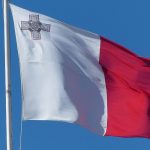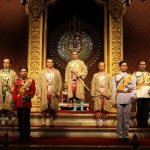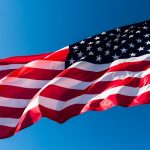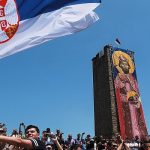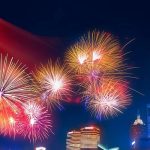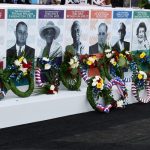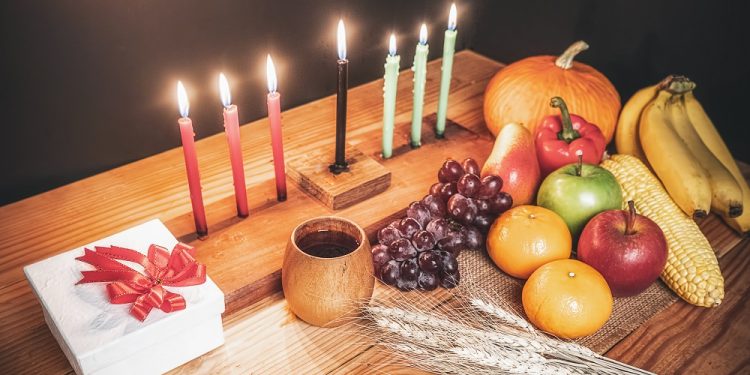
Kwanzaa
Kwanzaa is a week-long celebration celebrated in the United States, as well as other countries with populations of African descendants. It is a holiday that celebrates and honors African culture not only in the African-American community but also in the World African community. This holiday is celebrated from December 26th through January 1st.
History of Kwanzaa
Kwanzaa is a holiday tradition based on the “first harvest” celebrations in Africa. In recorded history, these first harvest celebrations can be traced back to Nubia and Egypt and can be found in cultures all over Africa. While many of these first-fruit celebrations may differ from one society to another, they all have a few principles in common.
These principles include people gathering together to celebrate, acknowledging the creator and thanking him for his blessings, a commemoration of the past, a re-commitment to African cultural thought, and a time to celebrate community.
Rooted in these principles, especially those of the Ashanti and the Zulu, Kwanzaa arose from the Black Freedom Movement in 1966 in the United States. It was created by Dr. Maulana Karenga, a professor of Black Studies at California State University, Long Beach, USA.
He created it after the Watts riots as a way to bring African-Americans together as a community. He gave it the name Kwanzaa—a word taken from the phrase “matunda ya kwanza,” which is Swahili for “first fruits.”
Kwanzaa was originally envisioned by Dr. Maulana Karenga as an oppositional alternative to Christmas. However, in later years, he changed his position so as not to alienate African-American Christians and later stated that Kwanzaa was not created to give people an alternative to their religious holidays.
From 1966 through the end of the 20th century, the idea and practice of Kwanzaa began to slowly increase in popularity across the United States. Then its popularity began to increase dramatically after the start of the 21st century as the idea and practices of this holiday began to spread through conventional media and the Internet.
In 2004, a study showed that a little less than 5 million African Americans planned to celebrate the holiday that year. However, two years later, another study showed that almost 28 million African Americans had planned on celebrating the holiday in 2006.
In 2009, the popularity of Kwanzaa was further bolstered by the release of the documentary film about Kwanzaa called “The Black Candle,” narrated by Maya Angelou and directed by M. K. Asante. Since then, Kwanzaa has not only spread all across North America but also parts of Europe and Africa as well.
Kwanzaa Customs & Celebrations
Kwanzaa celebrations vary from family to family. Some families stick with strictly Kwanzaa-related practices, while other families mix elements of Kwanzaa into their Christmas celebrations. However, most Kwanzaa celebrations are based on Nguzo Saba—or the seven principles of Kwanzaa.
The Seven Principles:
- Umoja (Unity): Striving for and maintaining unity in the family and the community.
- Kujichagulia (Self-Determination): Defining oneself and speaking for oneself.
- Ujima (Collective Work and Responsibility): Building and maintaining a community and making our brothers’ and sisters’ problems our own and solving them together.
- Ujamaa (Cooperative Economics): Building and maintaining our businesses for ourselves and each other.
- Nia (Purpose): To build and develop our collective communities together.
- Kuumba (Creativity): To do whatever we can to leave our communities more beautiful than when we inherited them.
- Imani (Faith): To believe with our hearts in our people, our families, and the righteousness of our struggle.
The Seven Symbols:
Kwanzaa celebrations usually include a special mat called a Mkeka on which all the other symbols are placed. On this mat are placed a candle holder called a Kinara, seven candles collectively called Mishumaa Saba, mazao (fruits, nuts, and vegetables), a unity cup called Kikombe cha Umoja, an ear of corn called Vibunzi, and Zawadi or gifts.
Mkeka
The placemat, or Mkeka, is traditionally made from either straw or cloth. It symbolizes African history, tradition, and culture. All of the other six elements are placed on the Mkeka.
Mazao
Fruits, nuts, and vegetables are laid out to represent the historical foundation for this holiday—the gathering of people after a harvest. It represents bounty, joy, and sharing, and allows people to give thanks for their gifts.
Kinara
The Kinara, or candle holder, can be made of any material but is usually handcrafted from wood or other natural materials. This candle holder represents the ancestors, and the Mishumaa Saba is placed in it to represent the principles of Kwanzaa—which rise from the ancestors.
The Mishumaa Saba
Mishumaa Saba features seven candles. Three of them are red, three are green, and one is black. The three red candles represent the principles of Ujamaa, Kuumba, and Kujichagulia, and they are placed to the left of the green candles. The three green candles represent the principles of Ujima, Imani, and Nia. The black candle symbolizes Umoja and is lit on December 26th.
Kikombe Cha Umoja
Kikombe cha Umoja is a unity cup traditionally used to perform the ceremonious libation ritual, otherwise known as tambiko. This ritual is performed on the 6th day of Kwanzaa. In some African societies, the libation is poured for the living dead, whose souls stay connected with the earth until it is tilled.
During the Feast of Karamu, this unity cup is passed to family members and guests—all of whom drink from it to promote unity with one another. The eldest person then pours a libation for the four winds (north, south, east, and west). This last portion of the libation is reserved for the ancestors.
Vibunzi & Mihindi
Vibunzi is an ear of corn that is used to represent fertility. Vibunzi refers to one ear of corn. If more than one is present, then they are referred to as Mihindi. An ear is present for each child in the family. This is to show the importance of children to society and how they are the seed bearers of the culture into the future.
Zawadi
On the seventh day, gifts are exchanged with immediate family to reward accomplishments and commitments and are also exchanged with guests. It is recommended that these gifts be handmade to promote self-determination and to avoid the commercialism of the Christmas season. Accepting a gift makes the receiver an important part of the family and promotes the principle of Umoja—otherwise known as unity.
